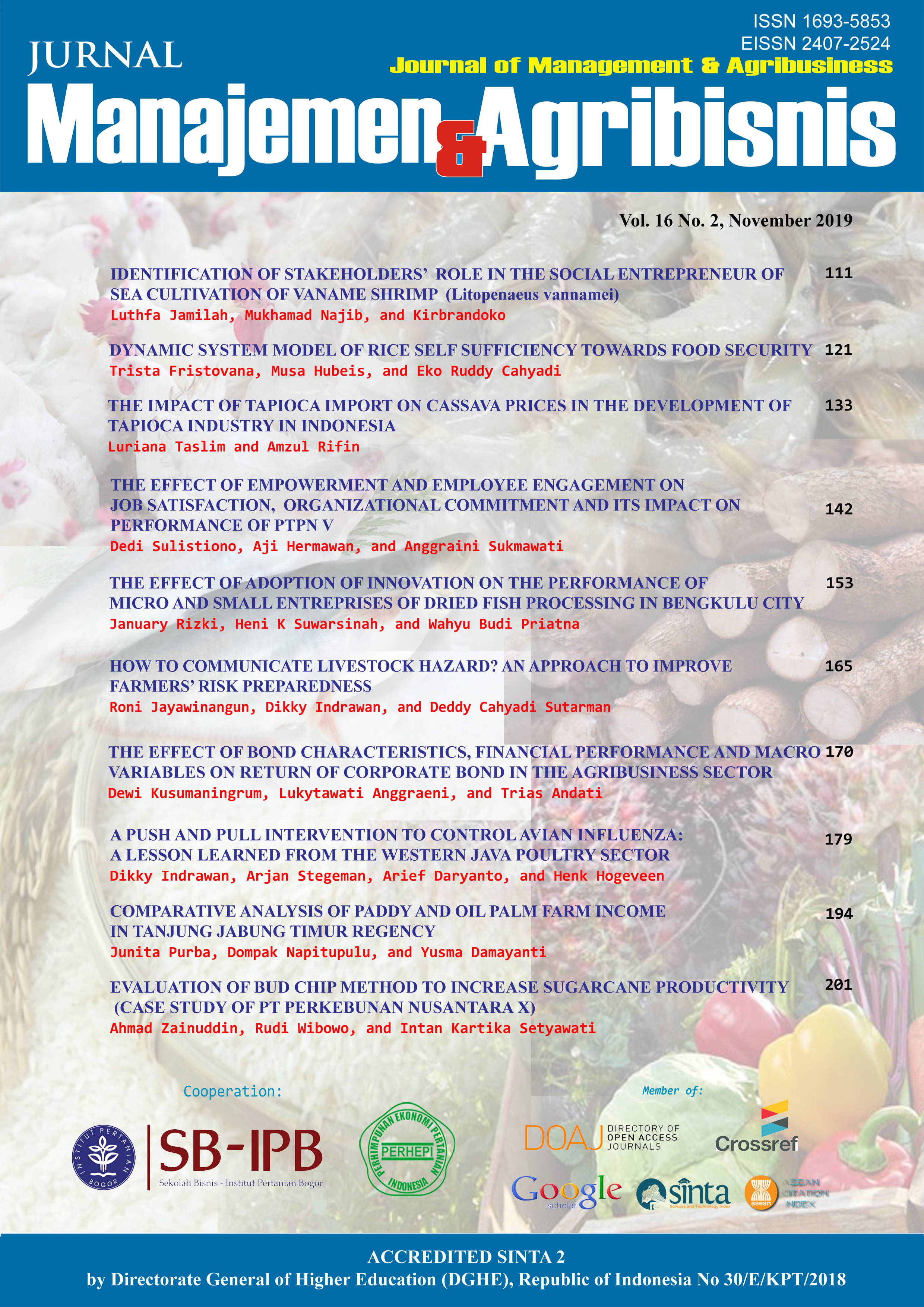EVALUATION OF BUD CHIP METHOD TO INCREASE SUGARCANE PRODUCTIVITY (CASE STUDY OF PT PERKEBUNAN NUSANTARA X)
Abstract
Bud chip method has proven to improve the productivity of sugarcane and produce more efficient, but still a few farmers who use it. This is due to higher production costs and sugarcane farmers are still not technically skilled. This study aimed to analyze the technical efficiency of sugarcane farming with conventional methods and bud chips in the PTPN X and to identify the factors underlying the farmers to use methods of bud chips in the PTPN X. The number of samples used as many as 31 farmers (11 farmers sugarcane bud chip method and 20 sugarcane farmers mule method). This study uses a stochastic frontier production function approach with Stochastic Frontier production function Cobb Douglas and using a logistic regression model. The results showed the value of technical efficiency index sugarcane growers with bud chip method is efficient (TE = 0.98) whereas the sugarcane farmers who use mule systems have not been efficiently categorized (TE= 0.78). Bud chip method has been proven can improve technical efficiency because it can result in higher productivity. The underlying things that make farmers choose the bud chip method are extensive cultivation, education level and ease of sugarcane cultivation with the bud chip method. Therefore, sugarcane productivity in PTPN X can be increased through the use of the bud chip method accompanied by an increase in sugarcane land area and training for farmers.
Keywords: technical efficiency, sugarcane farming, bud chip
Authors
Authors who publish with this journal agree to the following terms:
- Authors retain copyright and grant the journal right of first publication with the work simultaneously licensed under a Creative Commons Attribution License that allows others to share the work with an acknowledgement of the work's authorship and initial publication in this journal.
- Authors are able to enter into separate, additional contractual arrangements for the non-exclusive distribution of the journal's published version of the work (e.g., post it to an institutional repository or publish it in a book), with an acknowledgement of its initial publication in this journal.
- Authors are permitted and encouraged to post their work online (e.g., in institutional repositories or on their website) prior to and during the submission process, as it can lead to productive exchanges, as well as earlier and greater citation of published work (See The Effect of Open Access).

